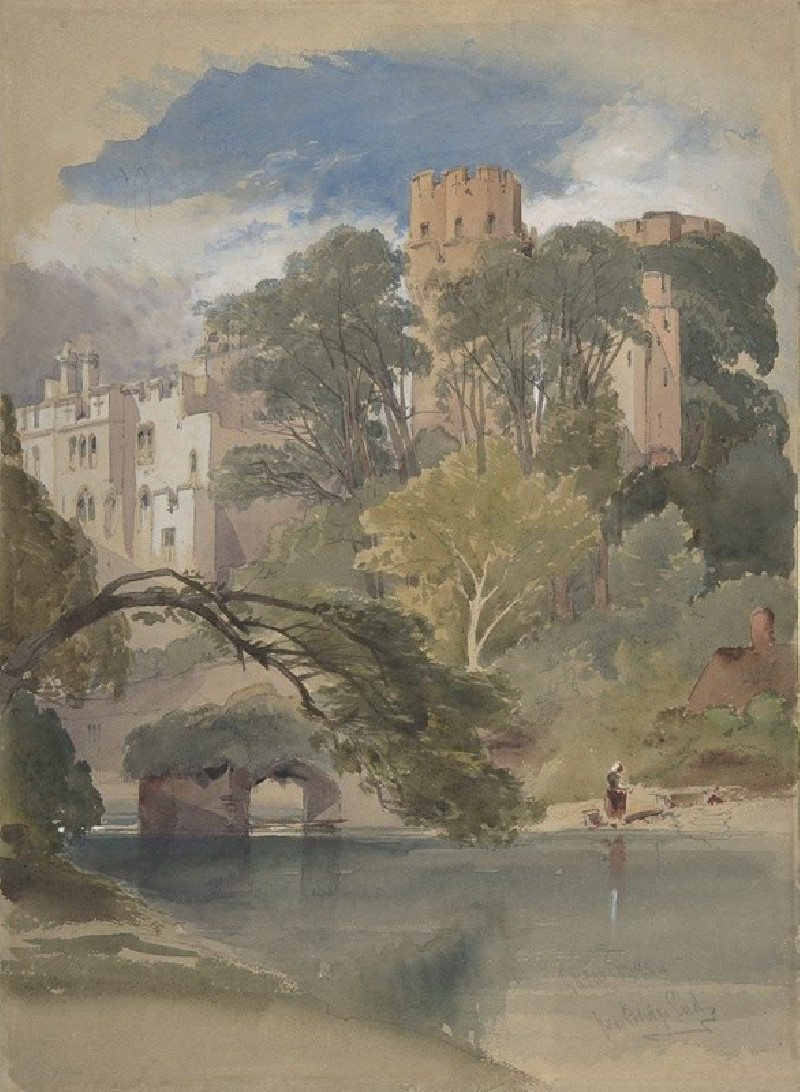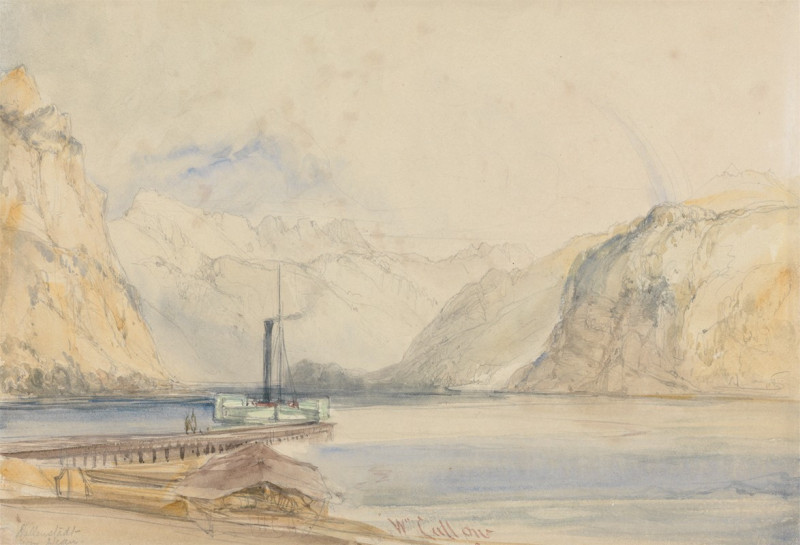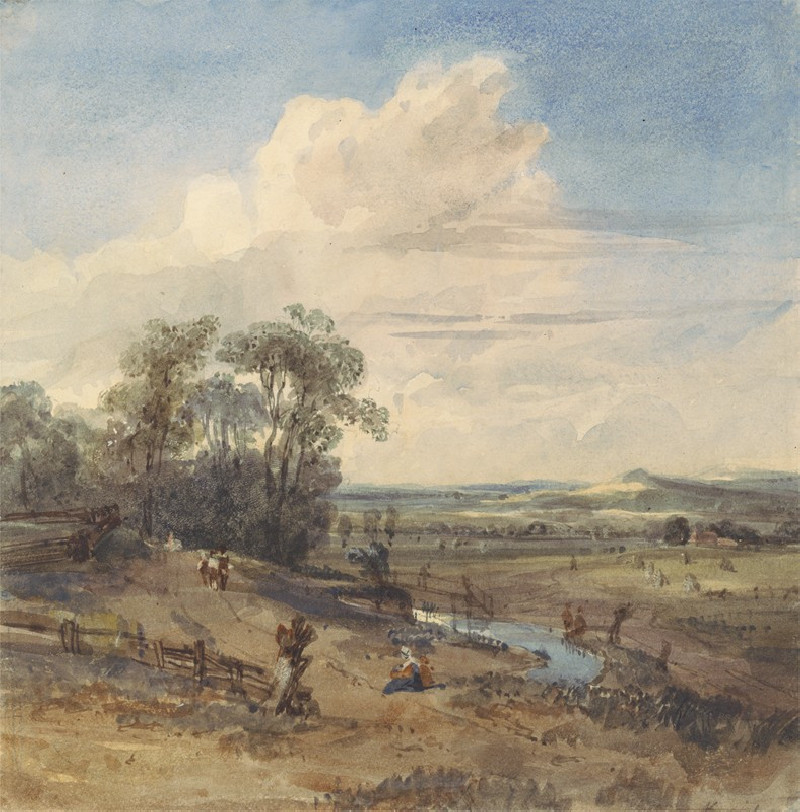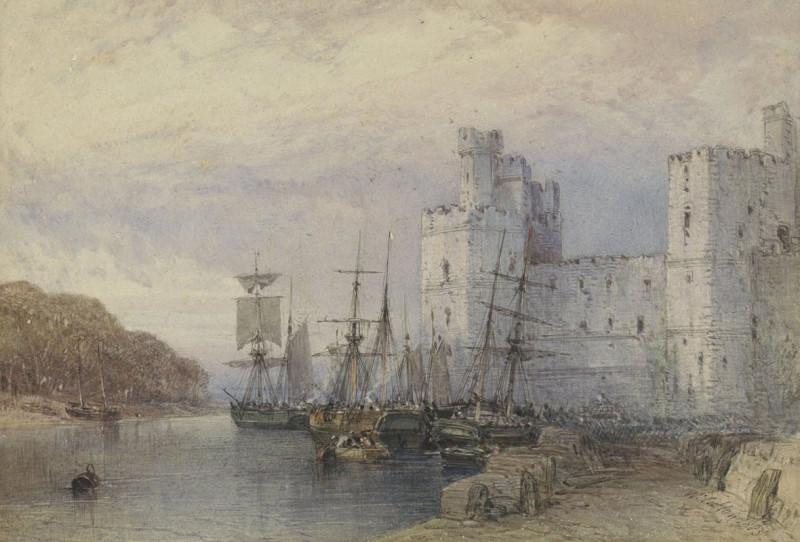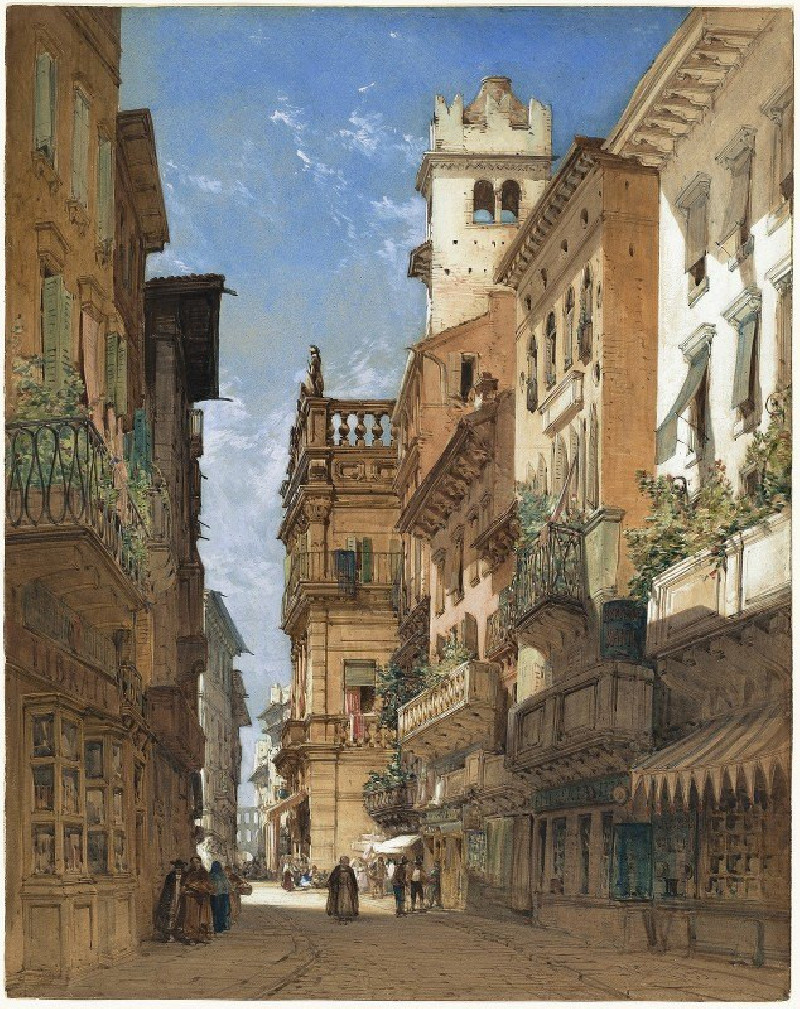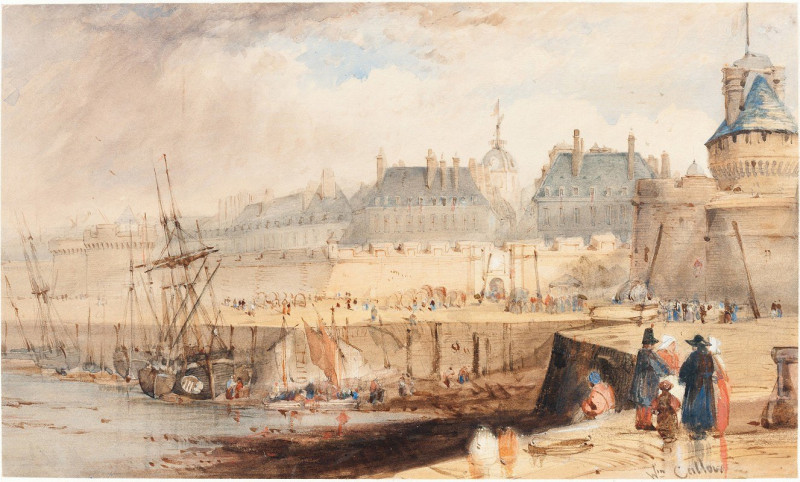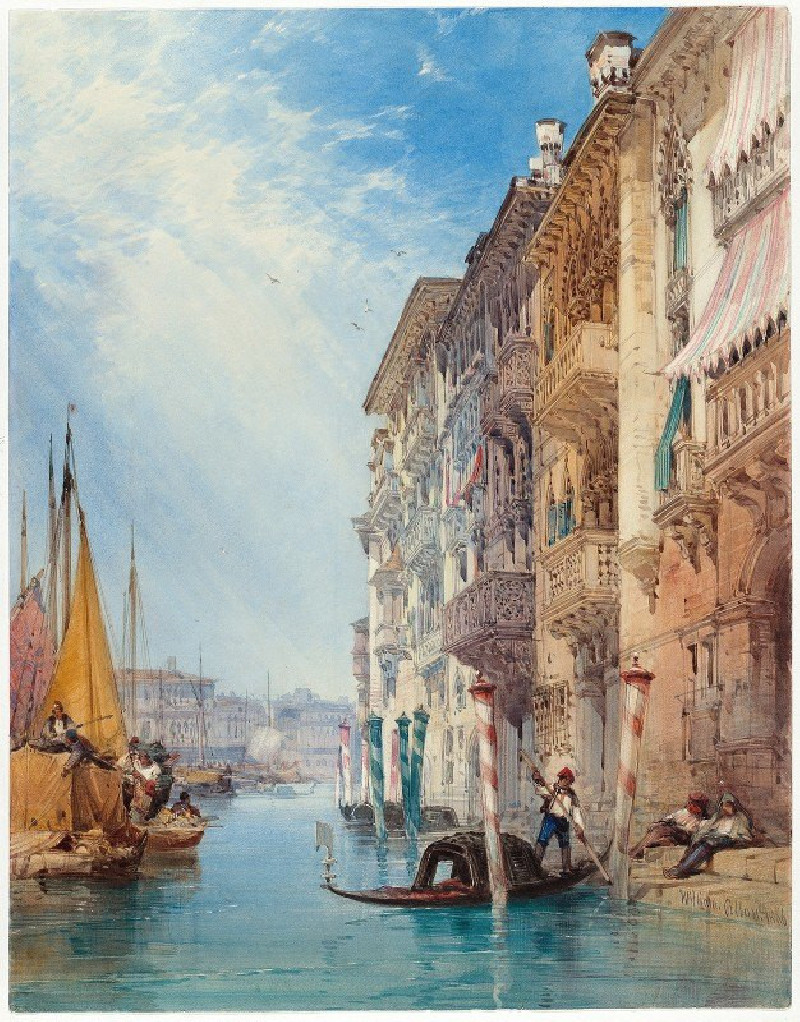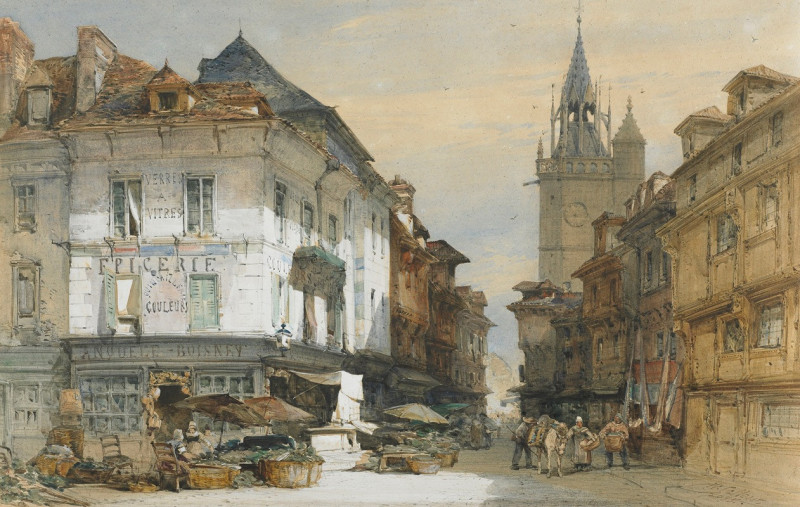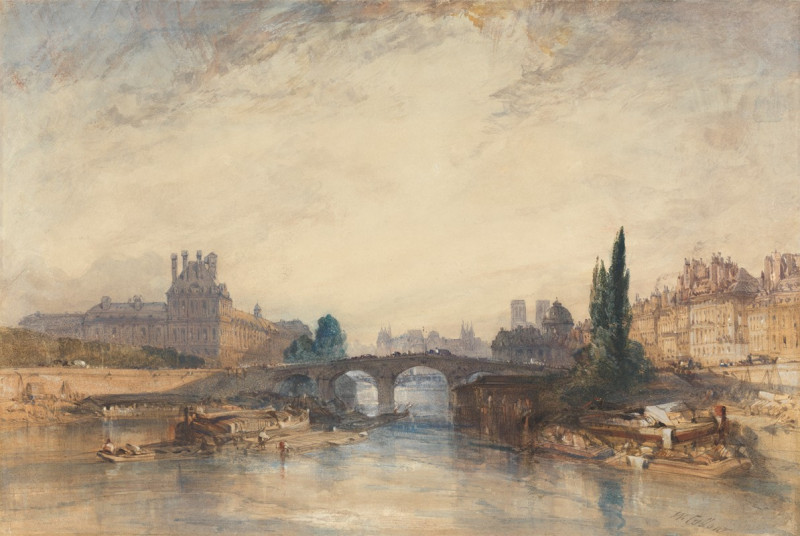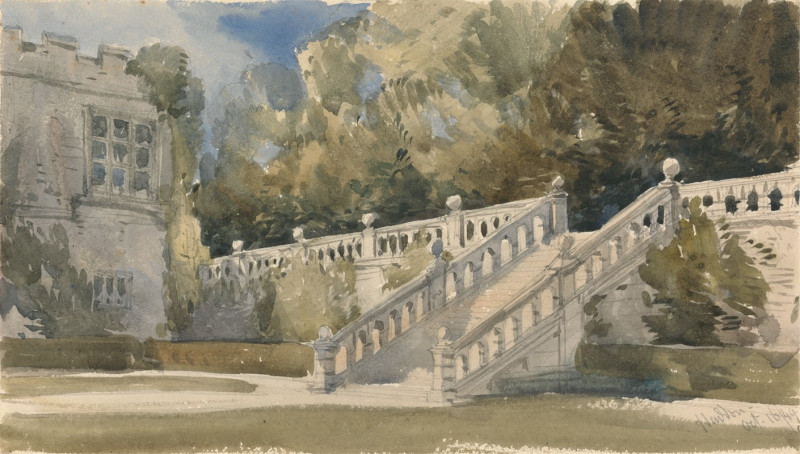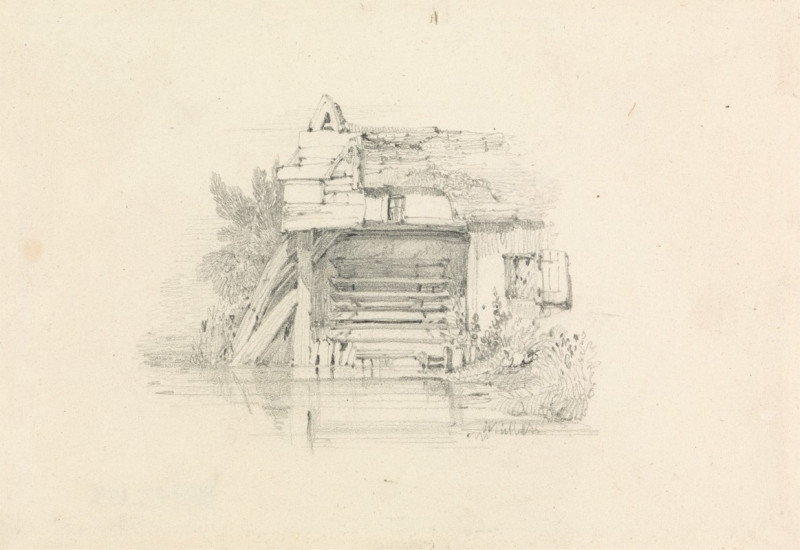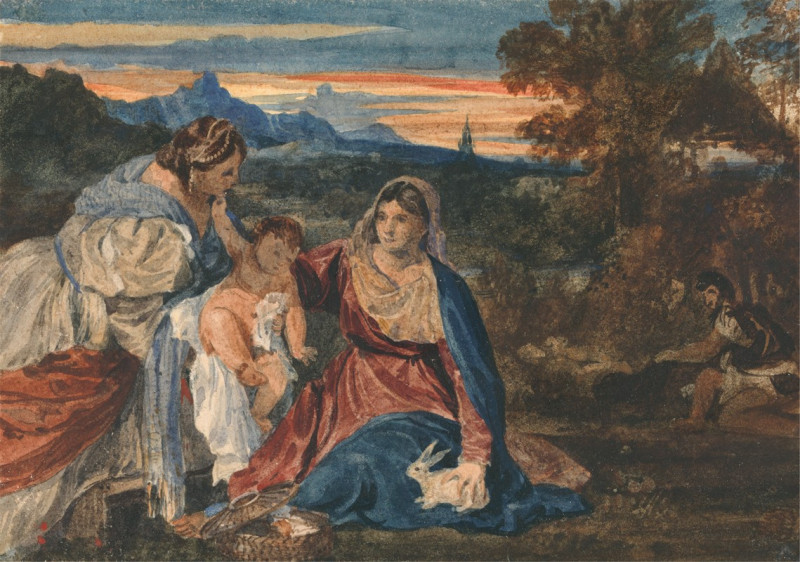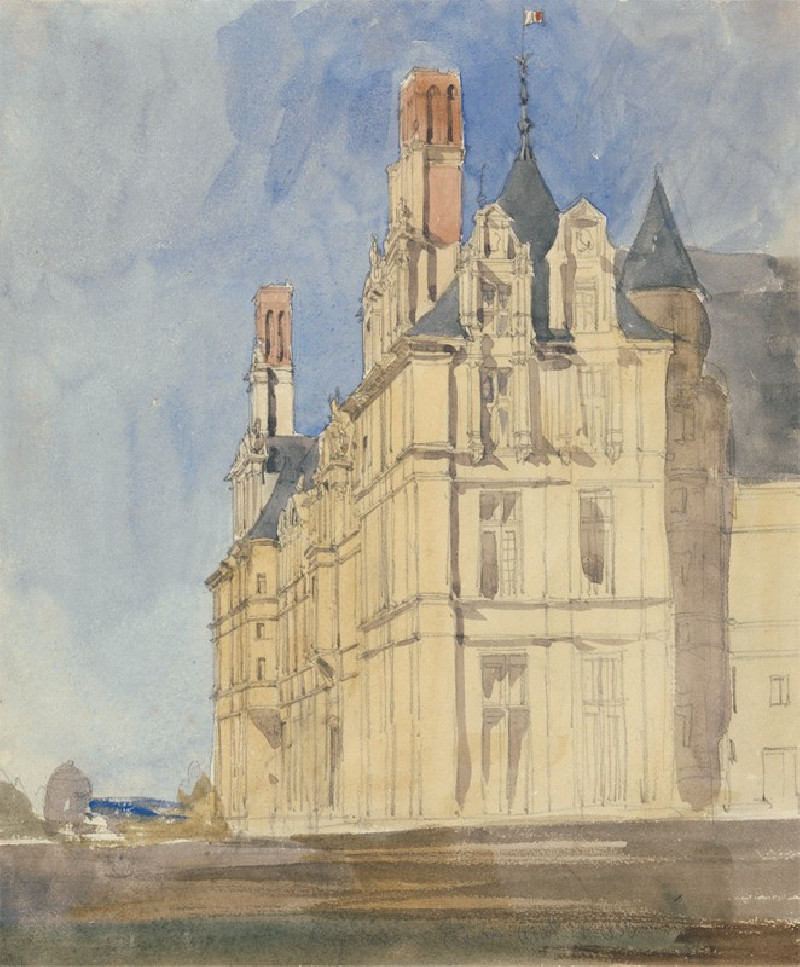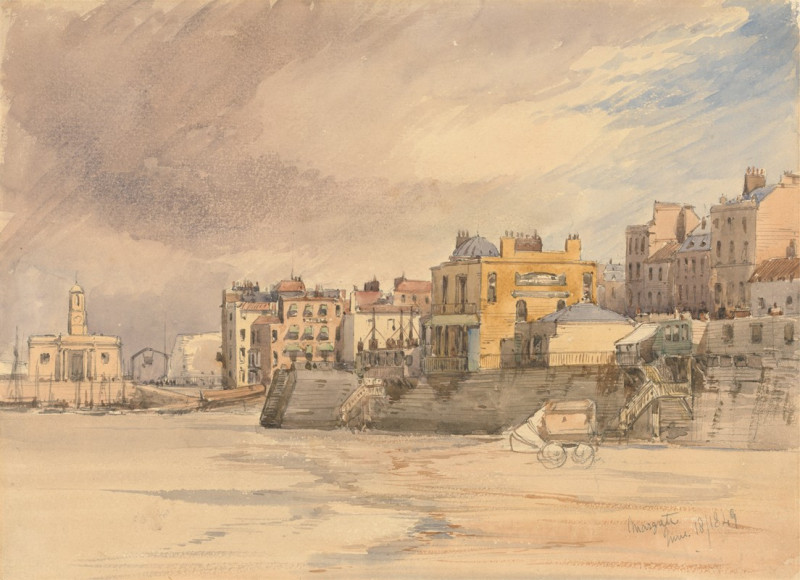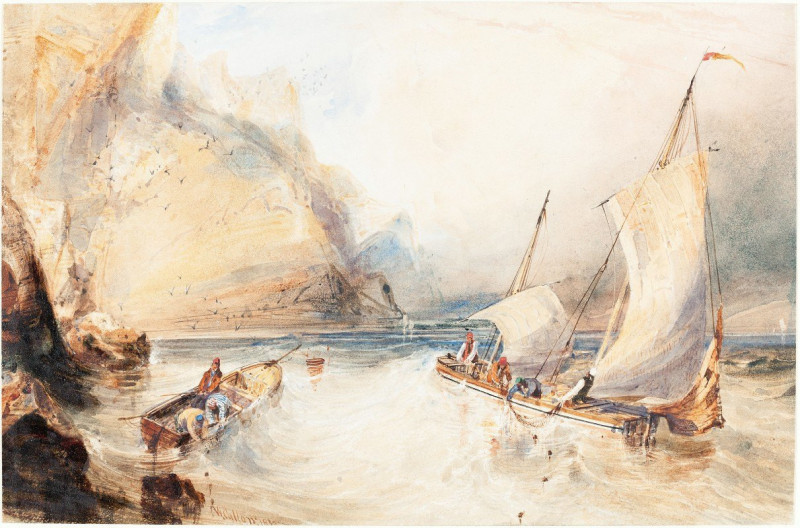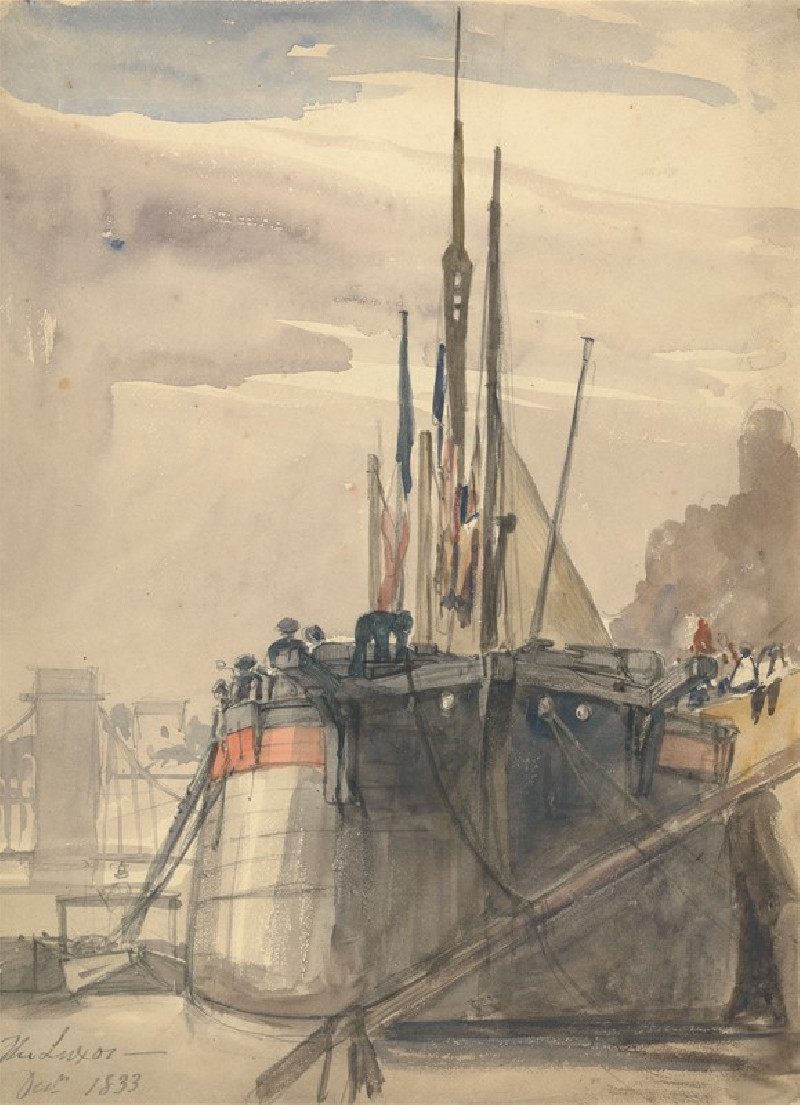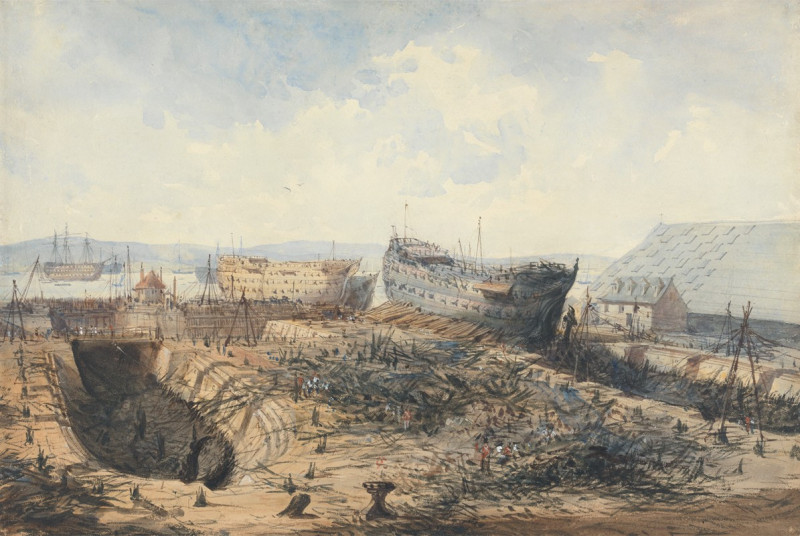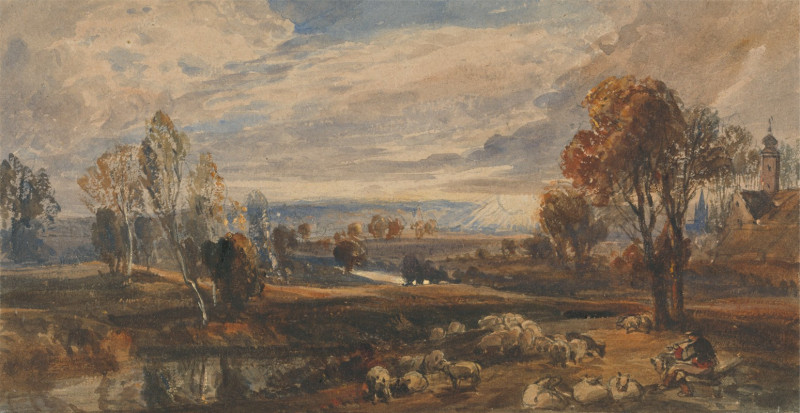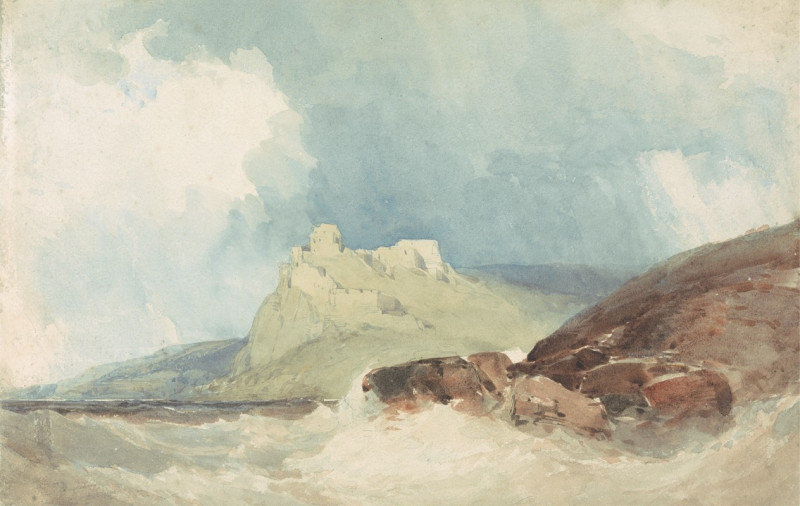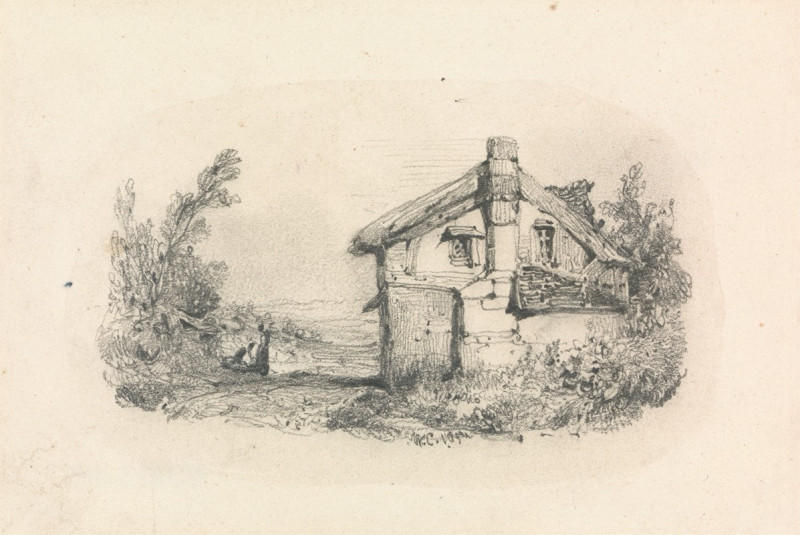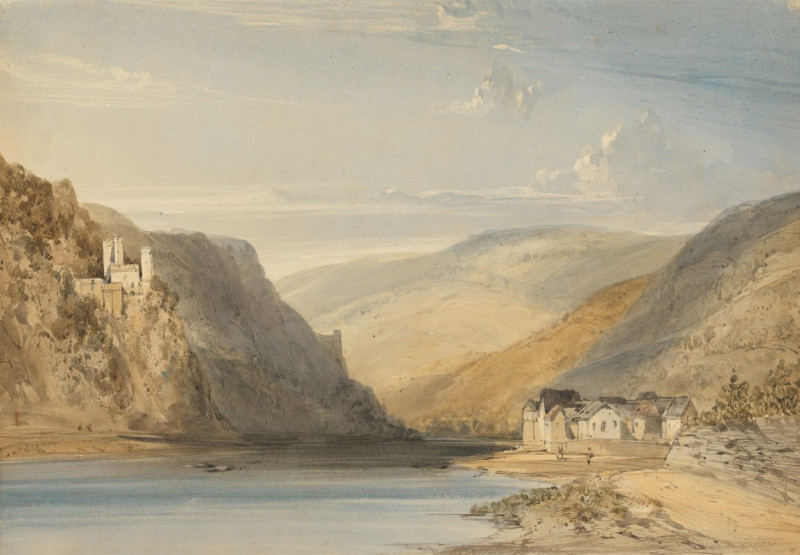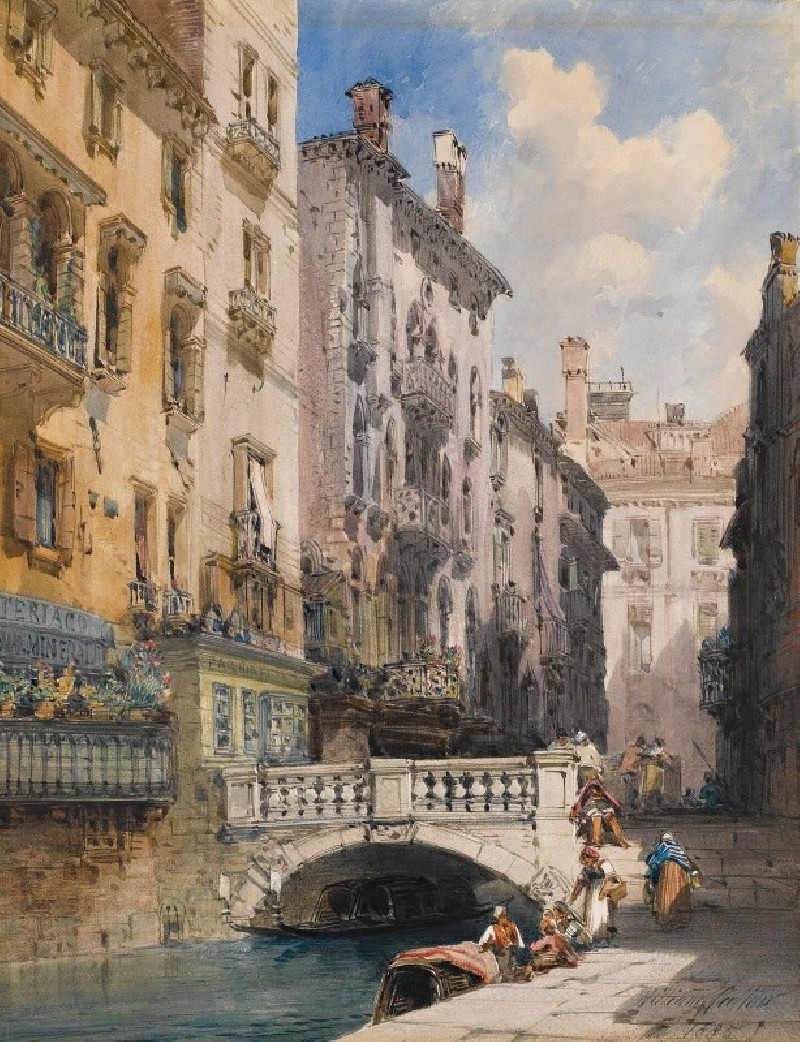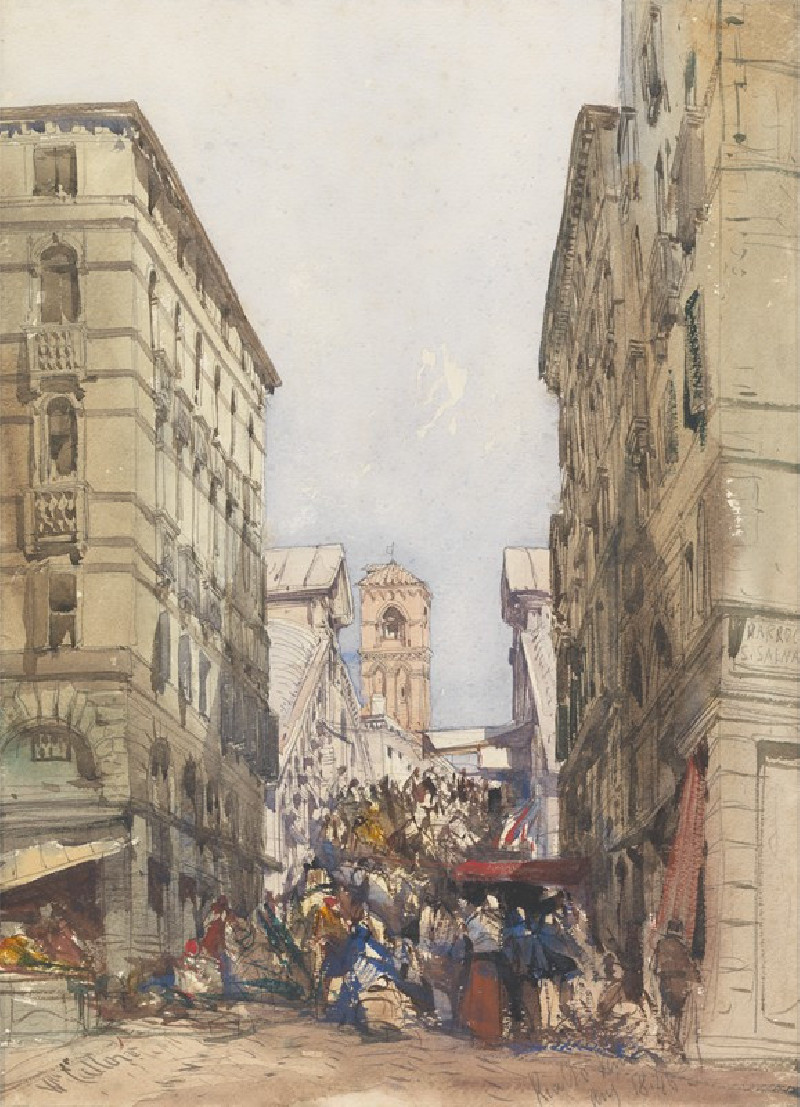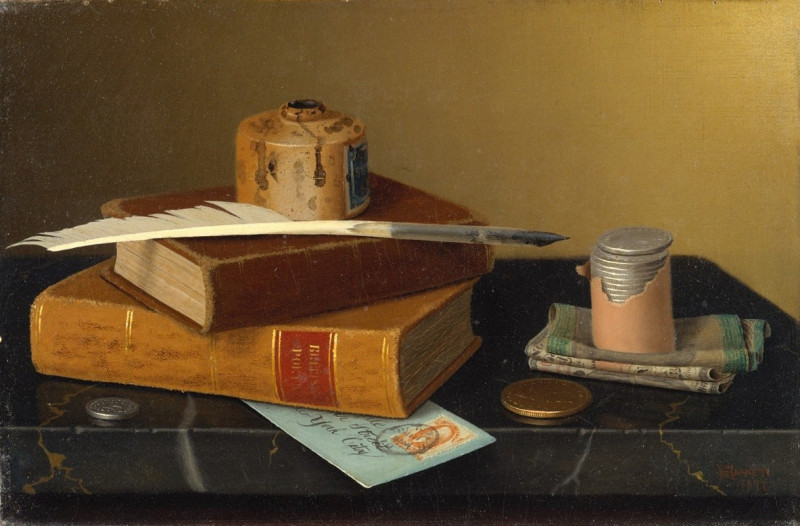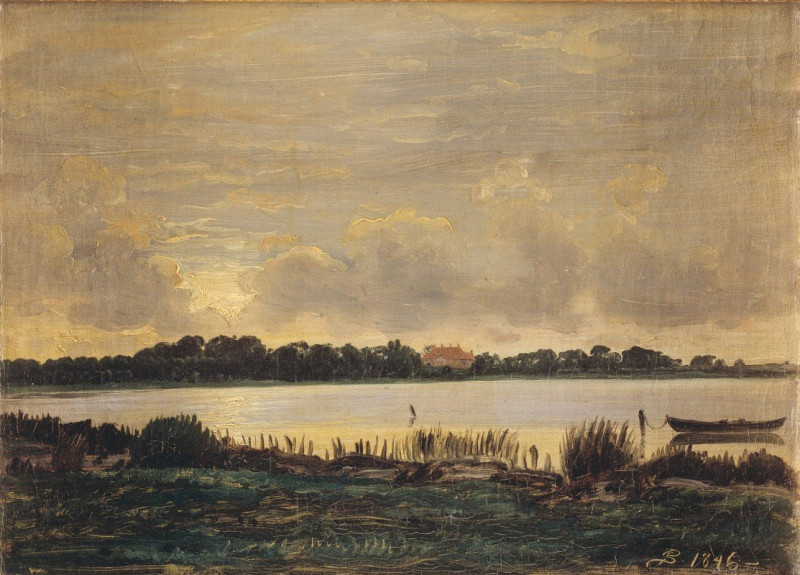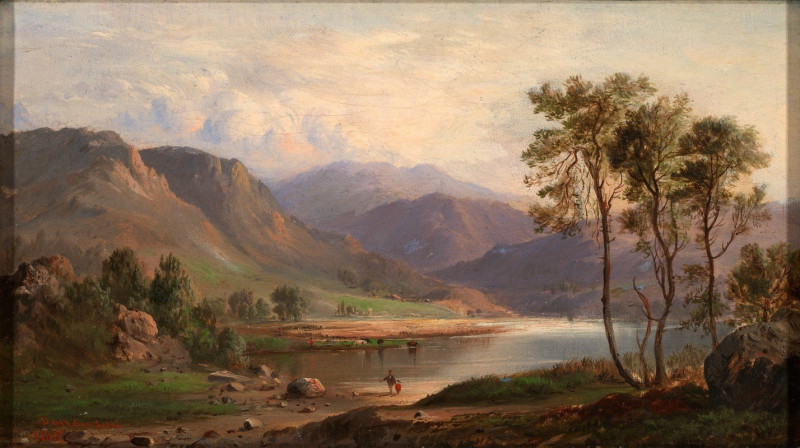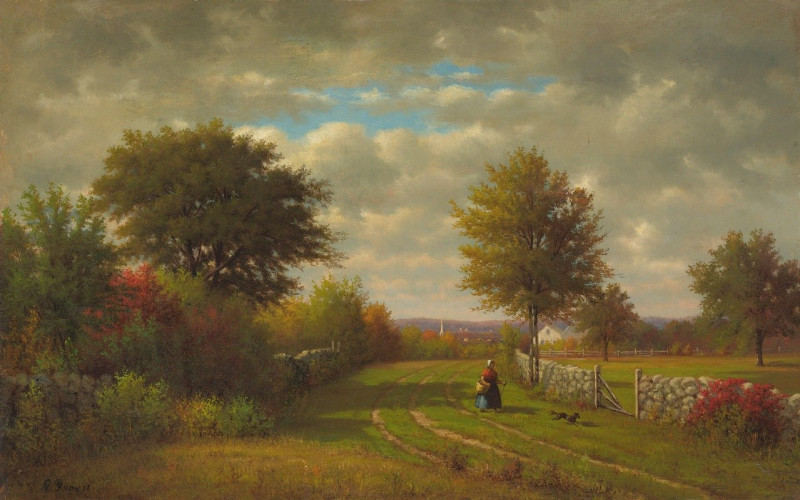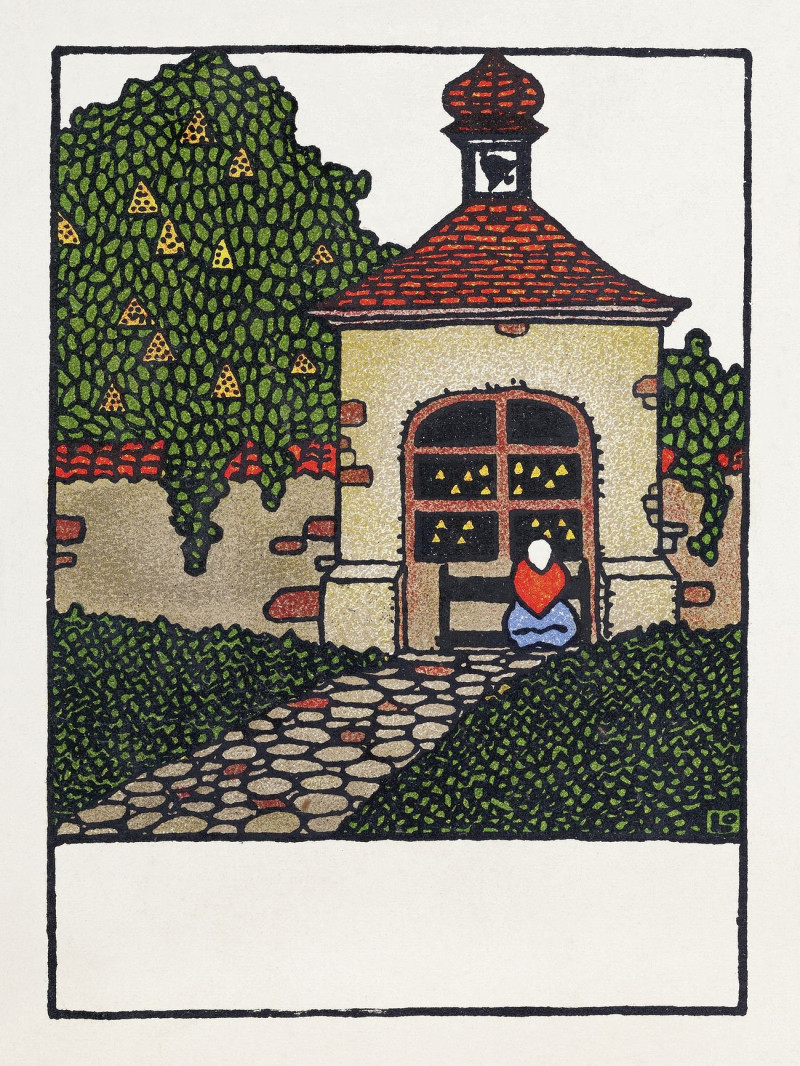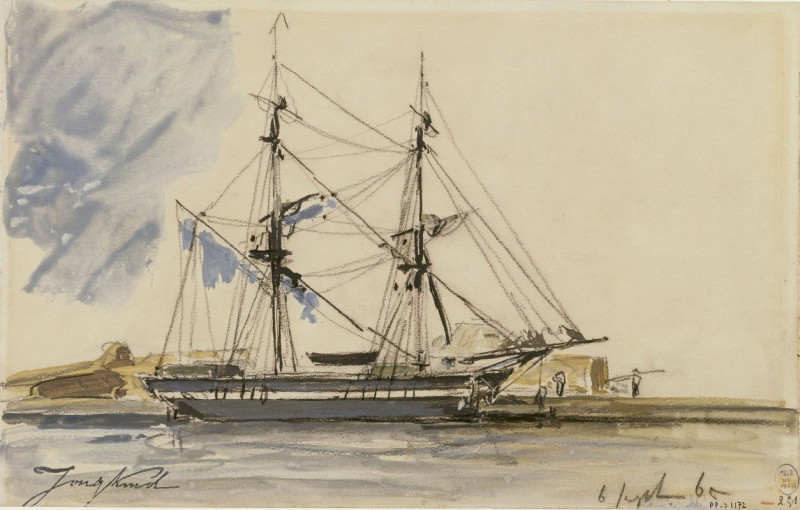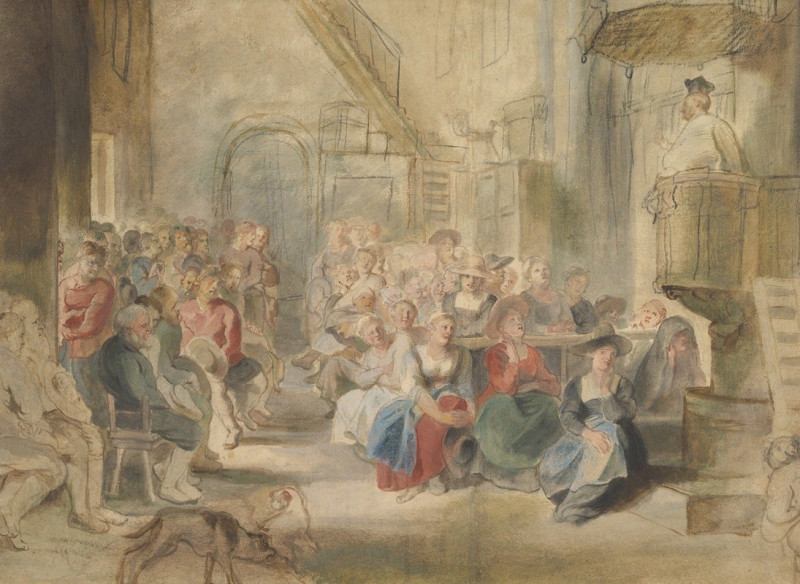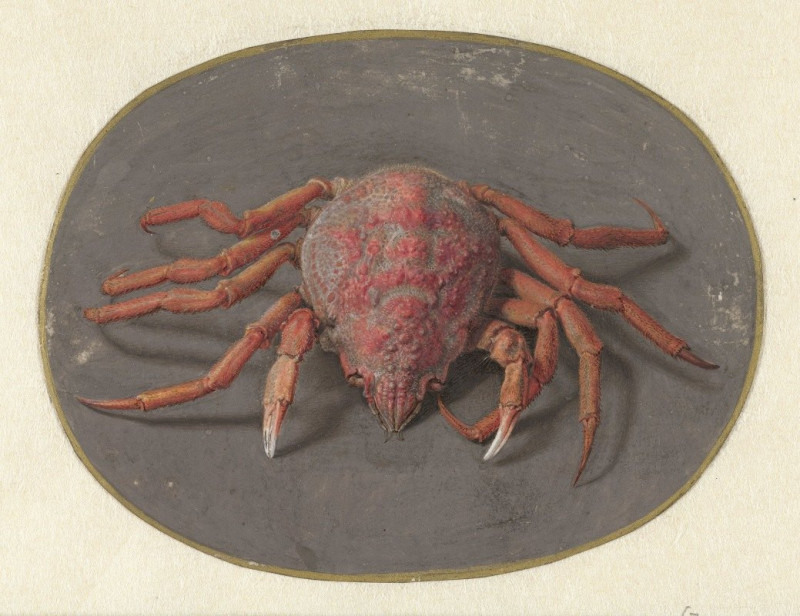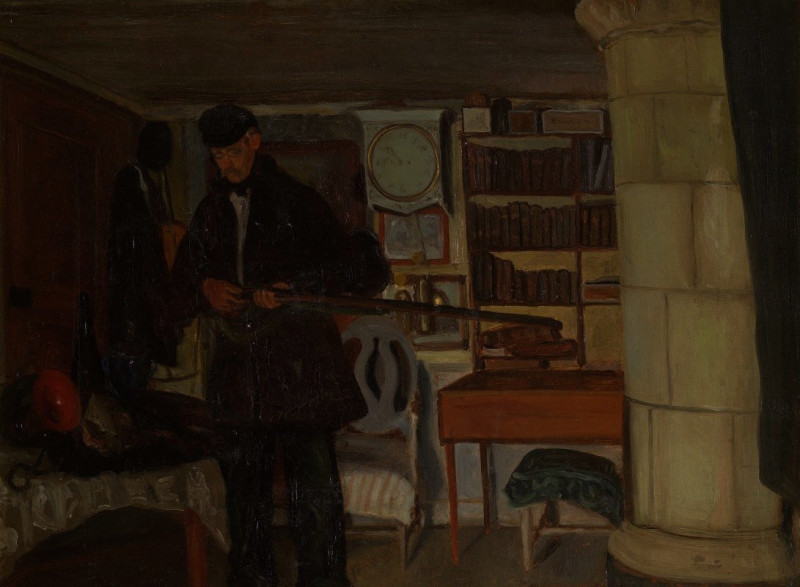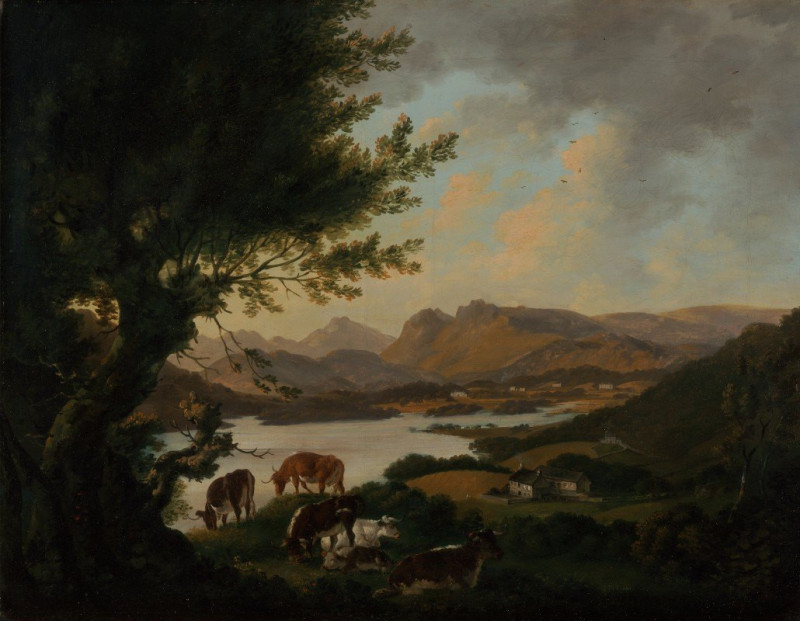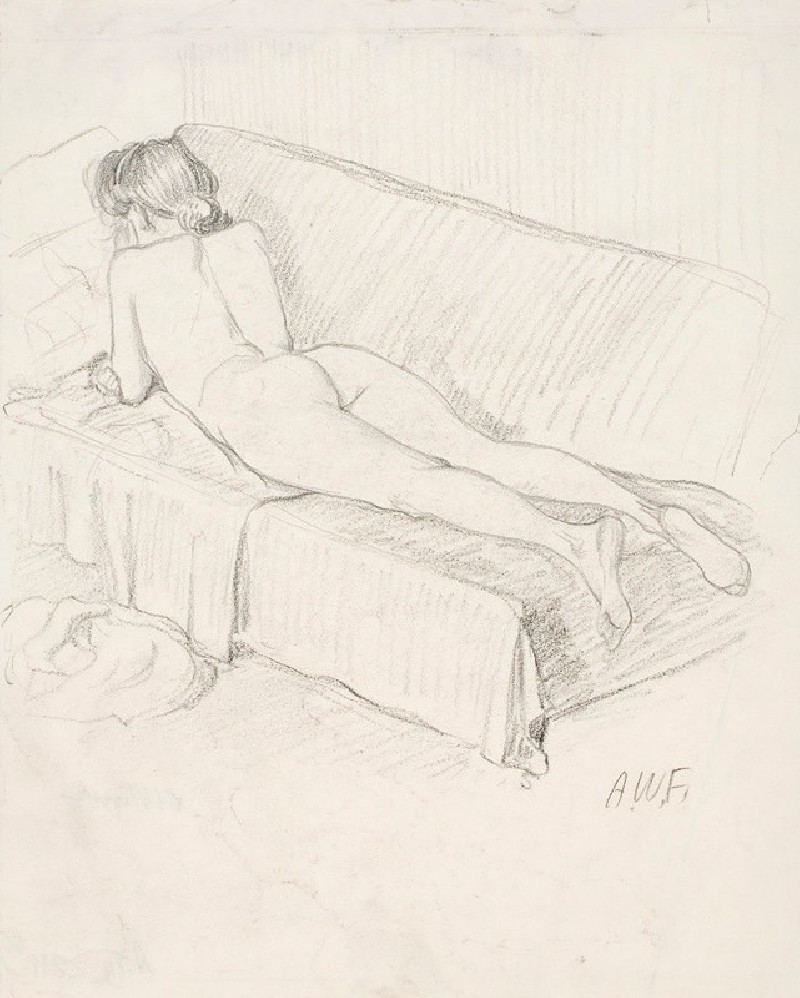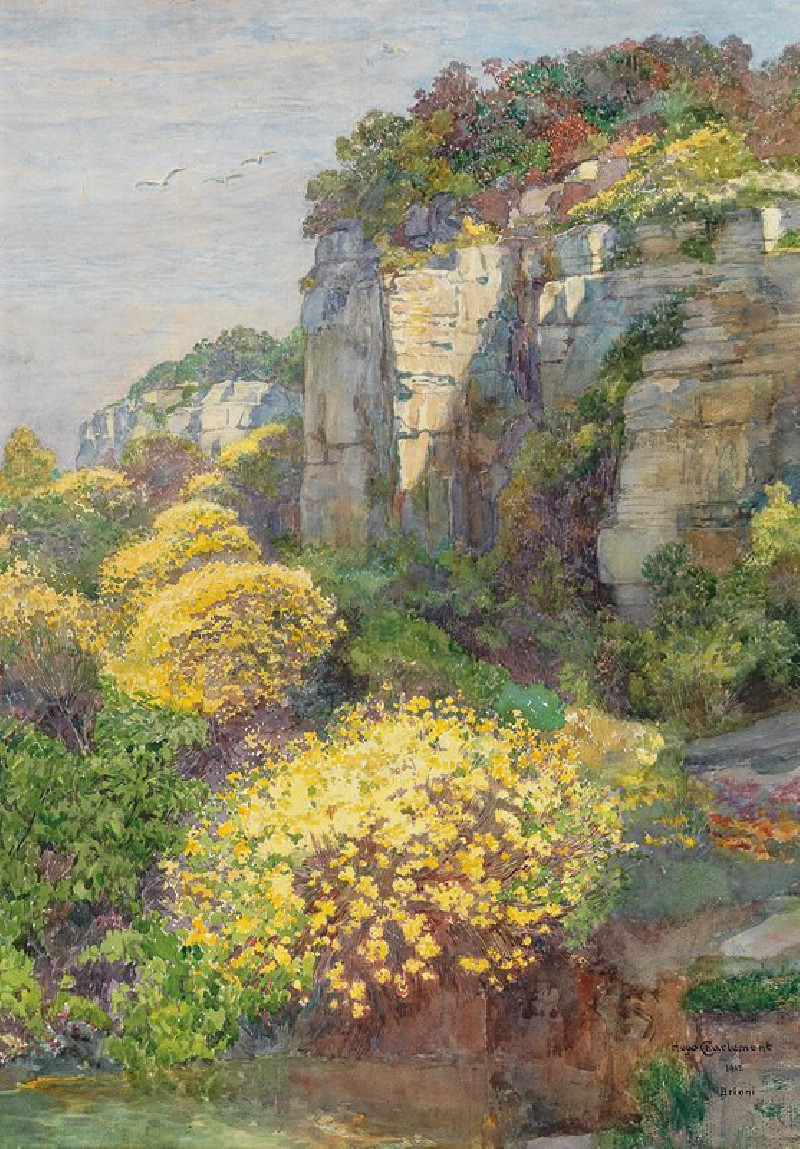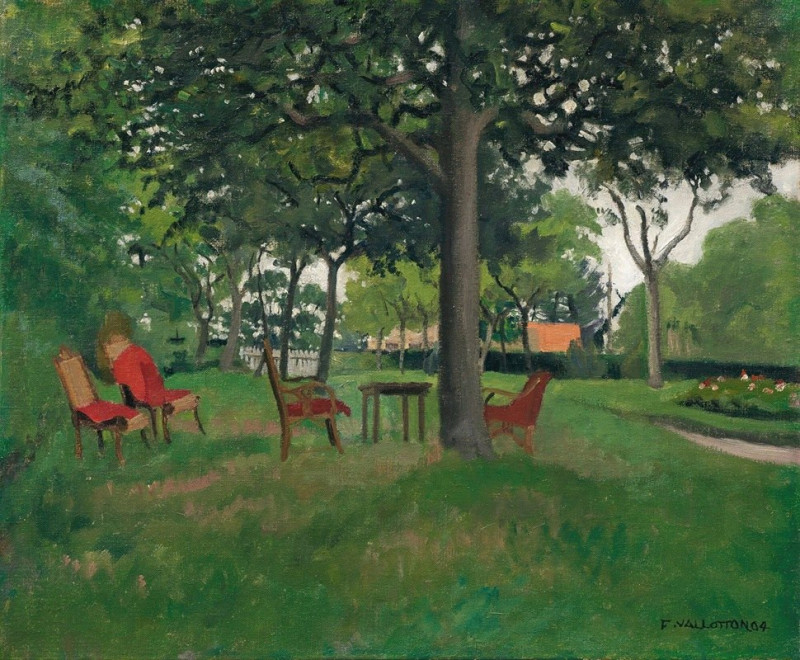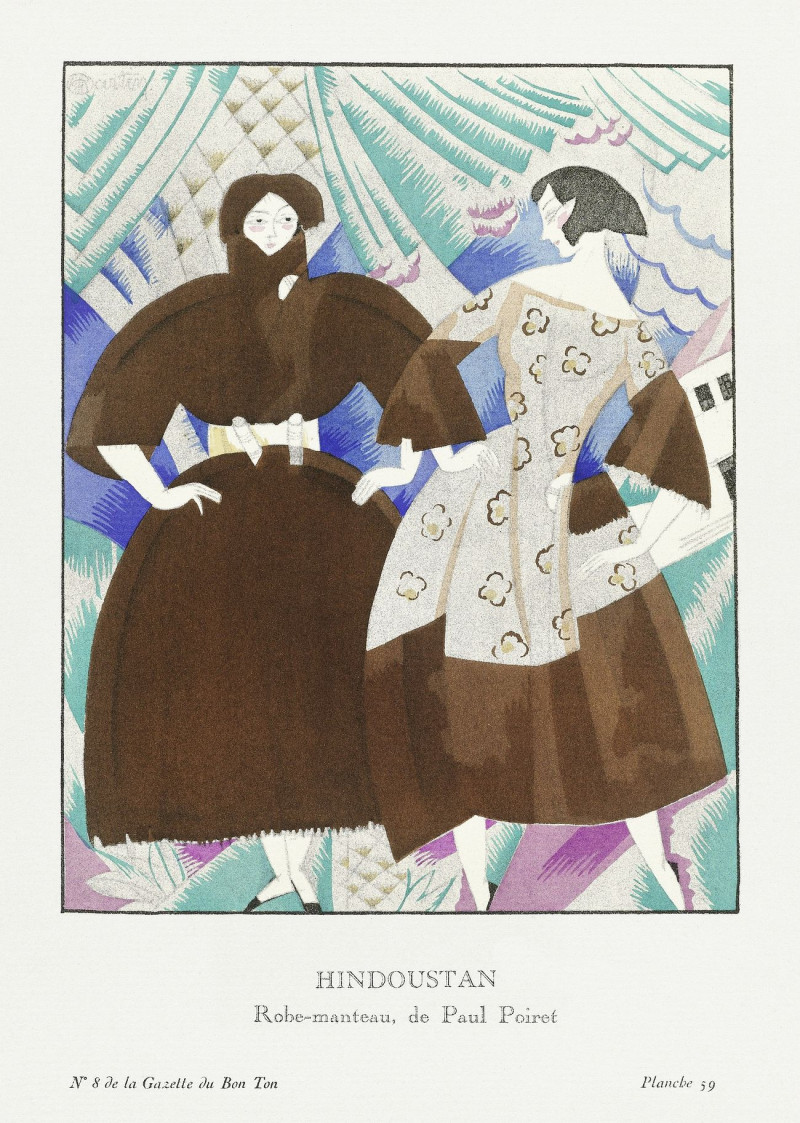Caesar’s Tower, Warwick Castle (ca. 1850)
Technique: Giclée quality print
Recommended by our customers
More about this artwork
1850William Callow's watercolor painting titled "Caesar’s Tower, Warwick Castle," dated around 1850, presents a tranquil yet majestic view of the historic Warwick Castle, enveloped by nature's embrace. The artwork captures the castle's imposing presence amidst the lush English countryside, depicted through Callow's deft use of light and shade.In the foreground, the calm river, reflecting the castle and sky, draws the viewer into a serene, almost idyllic scene. A solitary figure, possibly a fisherman, on the riverbank adds a human element to the landscape, highlighting the peaceful coexistence between man and nature. The gentle arc of a tree branch leads the eye towards the architectural grandeur of the castle, towering over the scene with its robust structure and historical gravity.The composition is a testament to Callow's skill in portraying not just architectural accuracy but also the atmospheric mood of the setting. The soft watercolors blend seamlessly to create a scene that is both a historical document and a piece of artistic beauty.
Delivery
Returns
William Callow was an English landscape painter, engraver and watercolourist.
Callow was born in 1812. July 28 in Greenwich. He studied with the artist Copley Fielding, where he learned the technique of en plein air sketching. He studied under Theodore and Thales Fielding, where he learned to color prints and make aquatints, and from 1825 to 1827 was taught to paint in watercolor.

